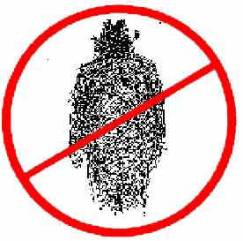
 sm
smCOLUMN EIGHTY-EIGHT, APRIL 1, 2003
(Copyright © 2003 The Blacklisted Journalist)
SECTION NINETEEN
EMAIL PAGE ELEVEN

 sm
sm
COLUMN
EIGHTY-EIGHT, APRIL 1, 2003
(Copyright © 2003 The Blacklisted Journalist)
BY BRENT STAPLES
THE MASSACRE OF BLACKS IN TULSA
Subject: NYTimes.com Article: Coming to Grips With the
Unthinkable in Tulsa
Date: Sun, 16 Mar 2003 09:24:11 -0500 (EST)
From: <venire@znet.com>
To: info@blacklistedjournalist.com
March 16, 2003
Coming to Grips With the Unthinkable in Tulsa
By BRENT STAPLES
Americans tend to think of lawless nations in Africa and
Eastern Europe when the discussion turns to mass murder and crimes against
humanity. But a commission created by the Oklahoma Legislature spent the late
1990's searching for mass graves in and around Tulsa. The missing dead—who
could number as many as 300—were shot, burned, lynched or tied to cars and
dragged to death during the Tulsa Race Riot of 1921. This was a nightmarish
disturbance in which an army of white Tulsans reduced to ashes 35 square blocks
of what was then the most affluent black community in the United States.
The Tulsa Race Riot Commission closed up shop without
finding the bodies that witnesses recall seeing stacked like cordwood along
railroad sidings and on street corners. But the commission report shows without
question that the city encouraged the loss of life and property by deputizing
what amounted to a lynch mob. The state may also have been at fault in failing
to protect the community. Witnesses recall seeing white police officers looting
and burning, and in some cases killing unarmed black citizens without
provocation.
The survivors and their families presumed that the ghastly
detail in the riot report would move the city and state to make restitution,
especially in cases where lost property and life could be documented. The
Legislature has instead decided to bury the report and deal with the matter
partly by giving the survivors commemorative medals.
These aging men and women, many in their 90's, have not
been content to go quietly to the grave. Instead, they have filed suit seeking
damages, represented by a legal team including Charles Ogletree, the Harvard law
professor, and the trial lawyers Johnnie Cochran Jr. and Willie Gary. The
arrival of the high-profile legal team sent a shock through sleepy Tulsa. But
the most electric moment came when 88-year-old John Hope Franklin, one of the
most important historians of the 20th century, was found to have joined the suit
as a plaintiff.
Mr. Franklin served as an adviser to the riot commission.
His support for the suit represents a powerful condemnation of the State
Legislature. His name resonates in the black Tulsa community of Greenwood, where
a boulevard is named in his honor. Greenwood, such as it is, might not even
exist if not for his father, the estimable lawyer B. C. Franklin (1879-1960),
who was practicing in the community at the time of the riot. B. C. Franklin
somehow managed to avoid being killed and was briefly held captive after the
conflagration. After his release, he turned immediately to the task of fighting
the city in court. The accounts of this period in his autobiography, "My
Life and an Era," published posthumously, will be quoted often if this
newly filed lawsuit comes to trial.
In 1921, The Tulsa Tribune primed its city for the riot
with months of race baiting during which it referred to Greenwood as "niggertown."
The immediate spark for the riot was a now-lost Tribune article that encouraged
readers to lynch a jailed black man who had been accused—falsely as it turned
out—of trying to rape a white woman. The mob that showed up to lynch the
prisoner exchanged shots with a group of black men who tried to stop it.
City officials then made the fatal mistake of deputizing
the white mob, to which arms were handed out indiscriminately. As many as 10,000
whites, including the police and the National Guard, poured across the tracks
into Greenwood, burning, looting and shooting. One white witness reported seeing
officers in uniform robbing unarmed black citizens at gunpoint and shooting
those who resisted. While the police were thus engaged, an execution squad
composed of Klansmen roamed the riot zone, killing black men on sight.
Eyewitnesses tell of seeing corpses piled in the backs of wagons and pickup
trucks or stacked along the street. Those bodies, which were never found, were
thought to have been spirited into secret mass graves.
Greenwood had been a black city within a city that included
as many as 15,000 people and supported 191 businesses, including 15 doctors, 2
dentists, a chiropractor and 3 law offices. After the riot, as B. C. Franklin
writes: "As far as I could see, not a Negro dwelling-house or place of
business stood." Thousands of blacks were confined to makeshift prison
camps. Those who worked for white Tulsans were allowed to go out to their jobs.
But blacks were required under pain of arrest to wear or carry ID tags furnished
by the city.
The principal black political leaders fled Greenwood after
being indicted by a Klan-dominated legal system. B. C. Franklin remained, partly
because his wife and children were safe in his hometown, Rentiesville, 65 miles
away. His rooming house and law offices destroyed, he and his partners set up
shop in a tent and commenced the legal battle that prevented the city from
annexing Greenwood and forcing black people completely out of the city.
Echoing his father, John Hope Franklin told me in a recent telephone interview that he had joined the suit to "turn up the heat on Tulsa and Oklahoma." The courts will have to decide whether or not the riot survivors have a plausible case. But in the moral sense at least, Tulsa and Oklahoma have already lost. They did so by failing to accept responsibility for one of the most blood-curdling events in American history.
Copyright © 2003 The New York Time
Company ##
* * *
CLICK HERE TO GET TO INDEX OF COLUMN EIGHTY-EIGHT

CLICK HERE TO GET TO INDEX
OF COLUMNS
The
Blacklisted Journalist can be contacted at P.O.Box 964, Elizabeth, NJ 07208-0964
The Blacklisted Journalist's E-Mail Address:
info@blacklistedjournalist.com
![]()
THE BLACKLISTED JOURNALIST IS A SERVICE MARK OF AL ARONOWITZ